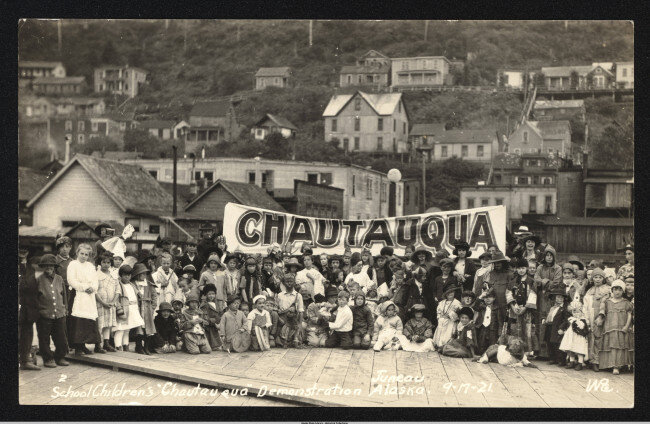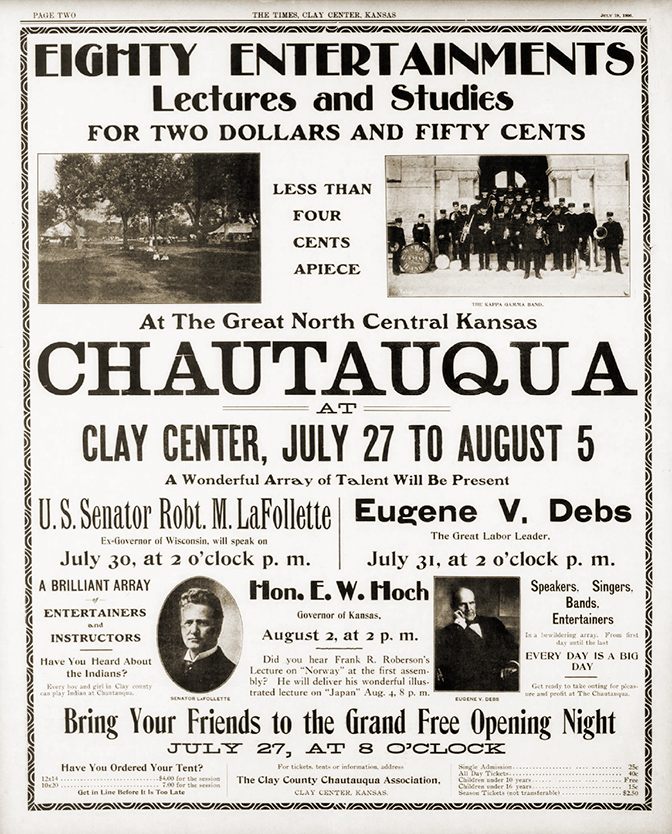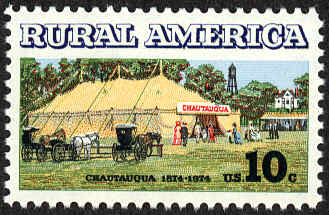The force behind the early education and social movements—American curiosity—still lives on today.
-
September 2020
Volume65Issue5

On a fine summer day during a horse-drawn century, thousands gathered by a lake far from anywhere. The gathering included farmers, blacksmiths, schoolteachers, millers, and more. Some stayed a week, living in tents. Others hunkered down for a month, holed up in cabins. They named the gathering after the lake — Chautauqua.
Chautauqua is an Iroquois word whose meaning — moccasins tied together — describes the shape of the lake. But back when the world came to rural America solely through word of mouth, when “media” meant vaudeville, when schools met in single rooms, Chautauqua had a different meaning. It meant being interested in everything.
Growing from a single two-week session, Chautauquas spread across America. By the 1920s, traveling Chautauquas reached 10,000 towns and 45 million people. At a typical Chautauqua, campers learned Latin or French, listened to Beethoven or ragtime, and sampled lectures on literature, art, and history. This movement that thrived on American curiosity began in the vision of two men.
John Vincent was an Alabama-born preacher interested in improving Sunday School teaching. Lewis MIller was an inventor, his fortune made by a better combine for cutting wheat. In the summer of 1873, noting the popularity of religious tent revivals, Miller and Vincent decided to hold their own gathering. They soon found the perfect setting, with covered platforms, benches, cottages, and ample space for tents. The following August, the first Sunday School Teachers Assembly gathered in southwest New York, at Lake Chautauqua.
The program featured sermons, songs, and speeches, but unlike other tent revivals, spontaneous speaking and singing were forbidden. “This is no place for me,” one man complained. “They have a cut-and-dried program, and a fellow can’t get a word in anywhere.” The following year, Vincent and Miller added more lectures, more tents, and a president.

Before the Civil War, Vincent had befriended an Illinois shopkeeper named Ulysses S. Grant. In 1875, President Grant spoke at the second Chautauqua. Thirty thousand showed up and a movement was born.
Within a few years, the annual summer gathering added language lessons, art classes, and talks on science. To demonstrate electricity, one professor electrified the carcass of a cow. “When the other pole was touched to the surface of the skin,” a man recalled, “there resulted the most lifelike muscular contractions — the eyelids winked, the nostrils contracted, and the lips and tongue moved. Imagine what a sensation this produced!”
Americans who had never studied chemistry saw frozen CO2 and other wonders. Farm wives sat by the lake, sketching, painting. Thousands forced to leave school for work listened to professors from Boston and New York. In 1892 alone, Chautauqua featured 168 different talks.
Chautauqua also started America’s first book club, the Chautauqua Literary and Scientific Circle. When asked how many might complete the four-year plan, which included English lit, astronomy, physiology, and US history, Vincent said he’d be satisfied with ten. The first class topped 8,000 and was soon used in schools, sewing circles, even prisons. Oprah, eat your heart out!
“It has been the struggle of the world to get more leisure,” said presidential candidate James Garfield, who visited in 1880. “But it was left for Chautauqua to show how to use it.”
By the 1890s, the “Mother Chautauqua” gathering by the lake had spawned “Daughter Chautauquas” across rural America. Speakers included a Who’s Who of American thought, from physicists to philosophers, from politicians to pundits, from Jane Addams to Susan B. Anthony to Clarence Darrow.
Some scoffed. Novelist Sinclair Lewis found Chautauquas "nothing but wind and chaff. . . the laughter of yokels." But Theodore Roosevelt, who spoke at two gatherings, knew better. Chautauqua, TR said, was “the most American thing in America.”
With the advent of radio, other speakers, other voices drowned out the Chautauquas. Though an annual festival is still held in Lake Chautauqua, the traveling circuit dried up before World War II.
“The Chautauquas were pushed aside by faster-paced radio, movies and TV,” wrote Robert Pirsig in Zen and the Art of Motorcycle Maintenance. “And it seems to me the change was not entirely an improvement. Perhaps because of these changes the stream of national consciousness moves faster now, and is broader, but it seems to run less deep.”

Yet the spirit of Chautauqua lives on, and not just on the lake. Click! Log onto Coursera. Or Khan Academy. EdX. Or for kids, Virtual Schools and Day Camps. Here at your fingertips are university courses in philosophy, history, lit, even quantum mechanics. What are you waiting for? One Chautauquan wants to know.
“I am thoroughly convinced,” said John Vincent, “that there is a hunger of mind abroad in the land.”

